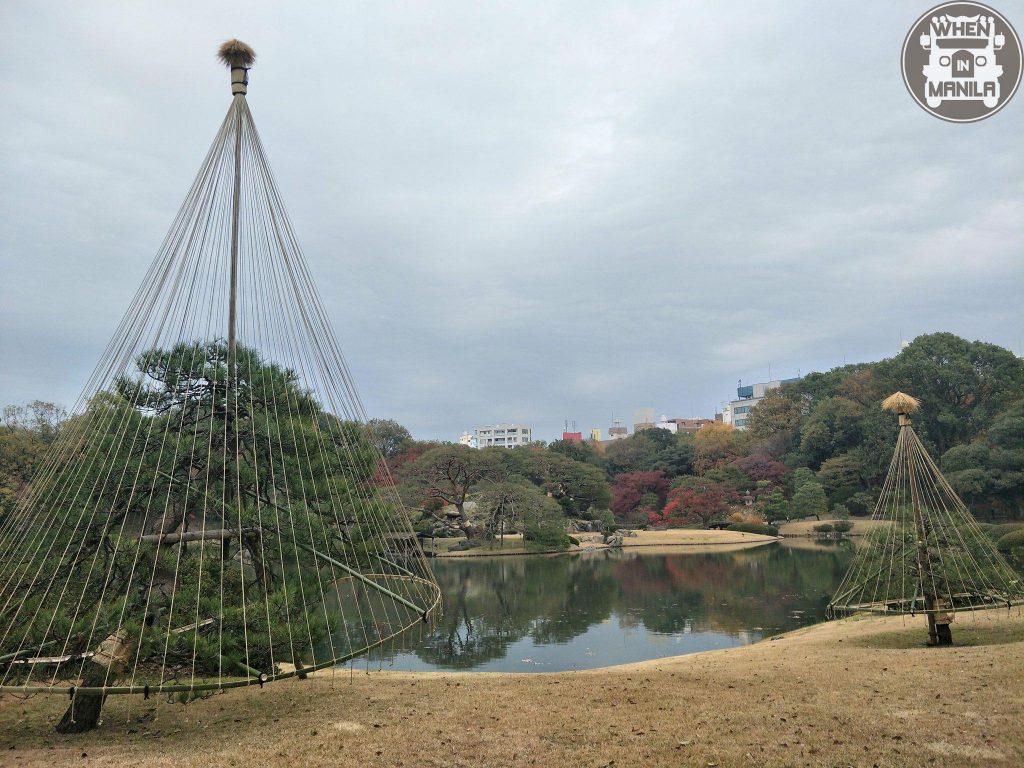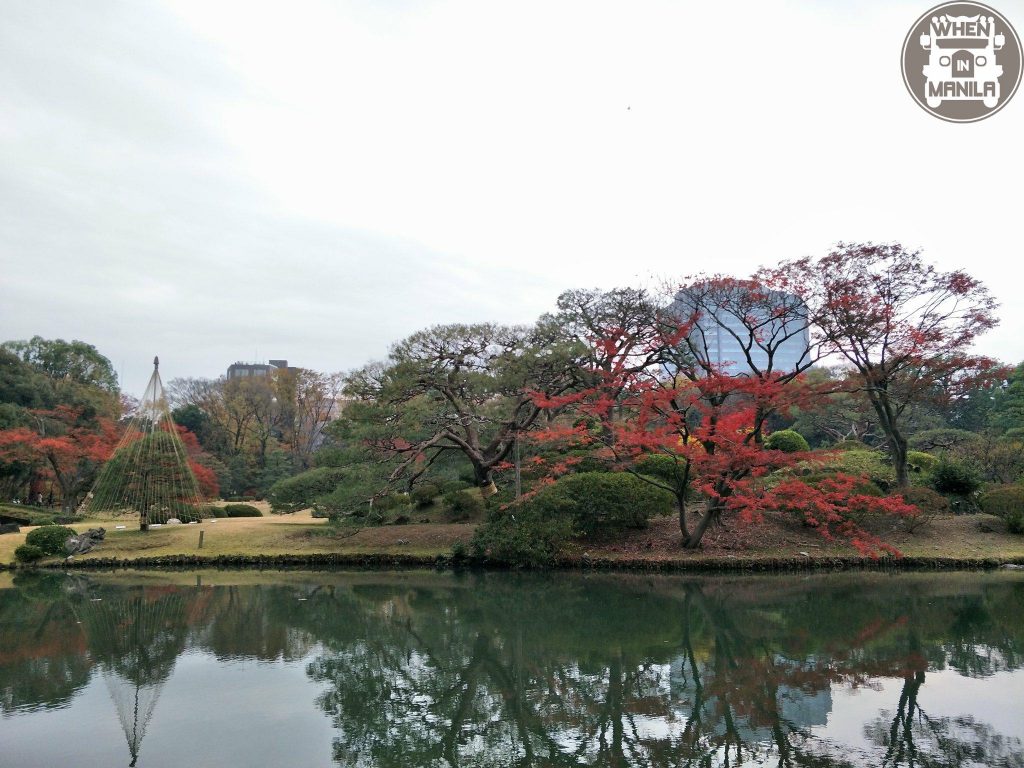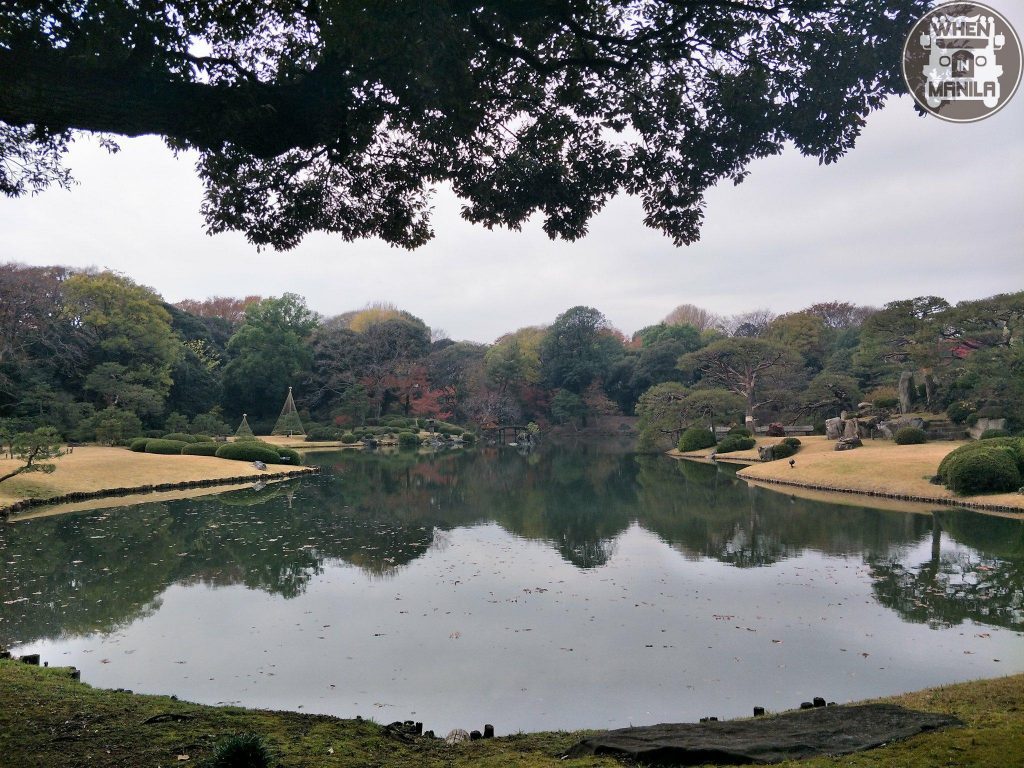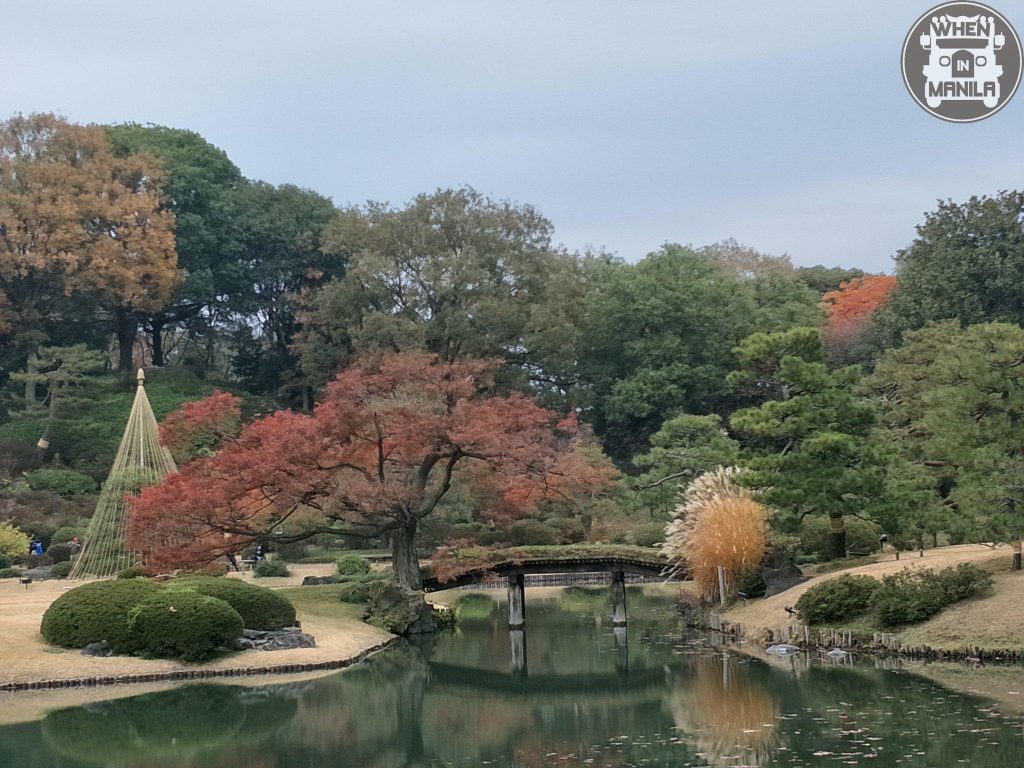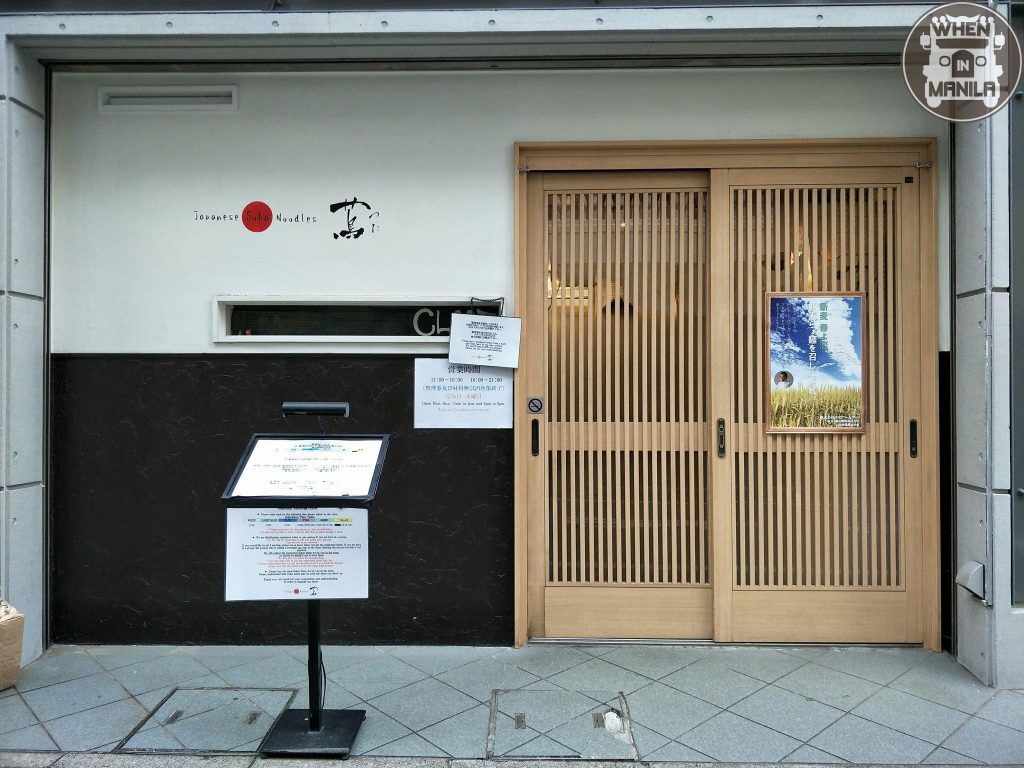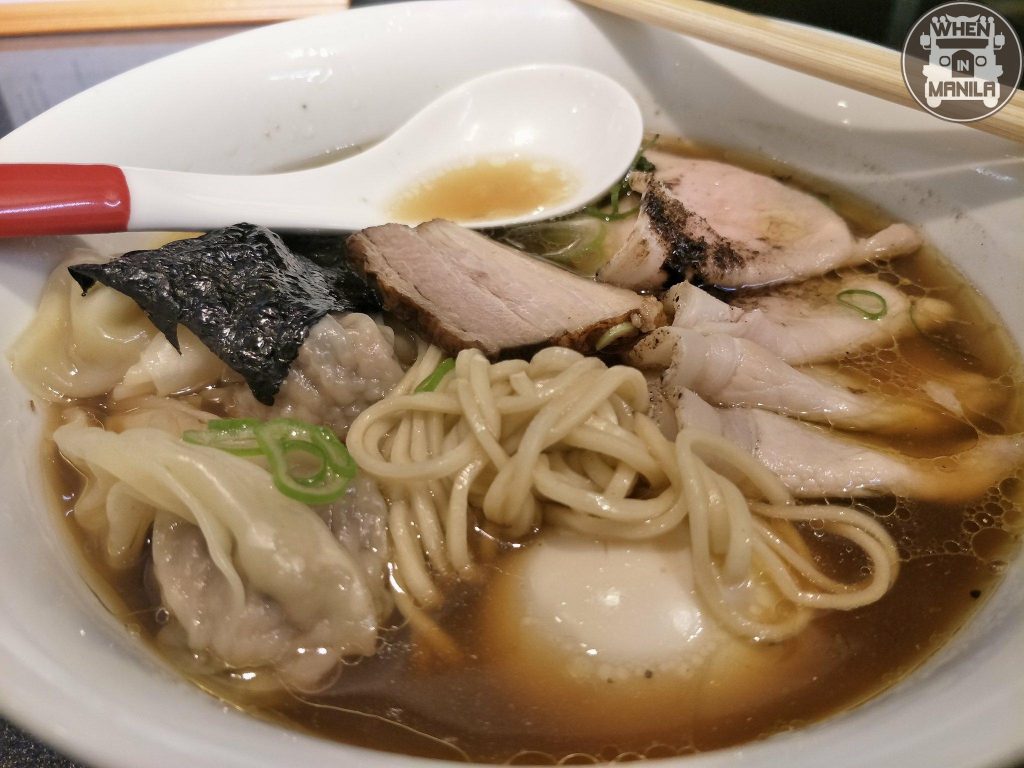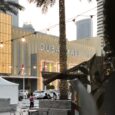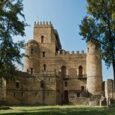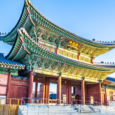Rikugien Garden is a circuit style garden that has man-made hills and pond that reflects Waka poetry, a type of poetry in classical Japanese literature. Constructed in 1702, the garden provides an amazing view of changing sights with the changing of the season. The garden shows 88 scenes that appear in Japanese classical literature and Chinese classics.
Rikugien Garden is a representative garden of the Edo period. It was the second residence of the founder of Mitsubishi, Iwasaki Yatara during the Meiji era. Then, the Iwasaki family donated it to Tokyo in 1938. The garden was designated as a “Special Place of Scenic Beauty” in 1953.
Rikugien got its name from the six classifications of Waka poetry including the auxiliary poem, counting poem, comparing poem, example poem, and celebration poem.
Scenic Spots in Rikugien Garden
Tsutsuji-chaya
This teahouse in the garden was built using azalea wood in the Meiji era. It survived was and has remained one of the best autumn spots in the garden with its tints of maple leaves.
Takimi-chaya
A mountain stream runs beside the arbor falling through the rocks. From the arbor, you can see impressive views of the waterfalls and rock formations. It is also nice to hear the sound of the water from Takimi-chaya.
Sekichu (stone pillar)
There used to be a stone pillar for each of the 88 sceneries associated with Waka poetry. At present, only 32 remain.
Horai-jima
A typical stone arch islet based on the main theme of Taoist immortality. It is a legendary island where an immortal wizard is believed to live. It is placed in a Japanese garden to wish eternal youth and immortality.
Fujishiro-toge
It is the highest manmade hill in Rikugien garden. It has a height of 35m. The top of Fujishiro-toge is called Fujimi-yama or Fuji view peak. Going on this hill will give you a panoramic view of the garden.
Sasagani-no-michi
A narrow path to wish for eternity similar to a spider thread. In the old days, spiders were called “sasagani”.
Togetsukyo
A stone bridge named after a famous poem composed with the moon moving in the sky as if crossing a bridge. “To” means crossing and “getsu” means moon while “kyo” means bridge.
Naitei-daimon
A gate that gives access to the center of the garden. During spring, you can see the weeping cherry tree on the Naitei-daimon in full bloom
Guided tours in English
Rikugien garden has guided tours in English. The volunteers tell stories about the spots inside the garden, the story behind the Japanese garden, and several historical topics including Waka poetry. This is all done while strolling in the garden.
Guided tours last for about 60 minutes. It is done twice a day, 11 AM and 2 PM on the first and third Sundays of the month.
Fees
Admission fees are as follows:
Adult – 300 yen
65 and over – 150 yen
Adult (group of 20 or more) – 240 yen each
65 and over (group of 20 or more) – 120 yen each
Adult (annual passport) – 1200 yen
65 and over (annual passport) – 600 yen
Adult (annual passport for all 9 gardens) – 4000 yen
65 and over (annual passport for all 9 gardens) – 2000 yen
Elementary students or under, and junior high students living or studying in Tokyo are FREE.
Location
Rikugien Garden
6-16-3 Hone-Komagome, Bunkyo-ku, Tokyo 113-0021
Access by train
JR Yamanote Line, Komagame Station Exit (South Exit) or Tokyo Metro Namboku Line Komagome Station (2nd Exit)
- walk 7 minutes to Front gate
- walk 2 minutes to Someimon gate
What’s near?
- 18 minutes on foot to Kyu-Furukawa Gardens
- 15 minutes on foot to Tsuta Soba Noodles (One Michelin Star ramen shop in Tokyo)
Have you been to Rikugien garden in Tokyo? Share your experiences with us!

